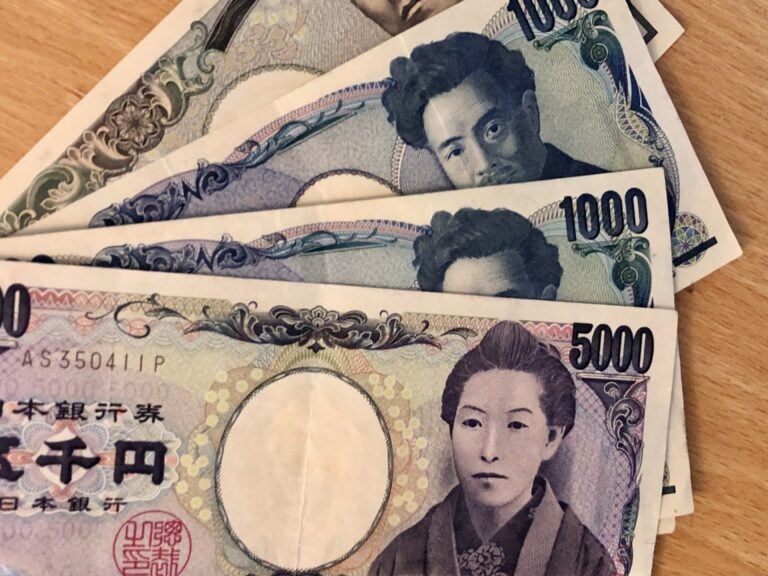
Like any country, Japan takes great care in turning its money into little tributes to its culture and history. Their paper money is emblazoned with leaders from every field: Science, business, politics, etc., with notable emphasis on great artists. Many of the faces depicted are of writers, and the reverse sides often contain world-renowned paintings or architecture. It’s a diversity of subject matter compounded by the number of times Japanese banknotes have been completely redesigned—constantly adding new people of interest—with a new batch of designs set to begin production in 2024.
If you haven’t read our article about Japanese coins, I recommend reading that first, as this one picks up where that one left off. There is much more to cover here than in the coin article. For that reason, let’s waste no more time and get right into it!
¥1000 Note
As mentioned above, Japanese banknotes are regularly re-designed with new faces: Due to inflation, the 1,000 yen note didn’t exist until 1950, where it was the largest denomination. This version featured Prince Shotoku, a political figure from the Kamakura period. The reverse side shows the Yumedono, a monument to the aforementioned man. The next redesign in 1957 featured Ito Hirobumi, the first prime minister of Japan, with the reverse side picturing the Bank of Japan’s headquarters.
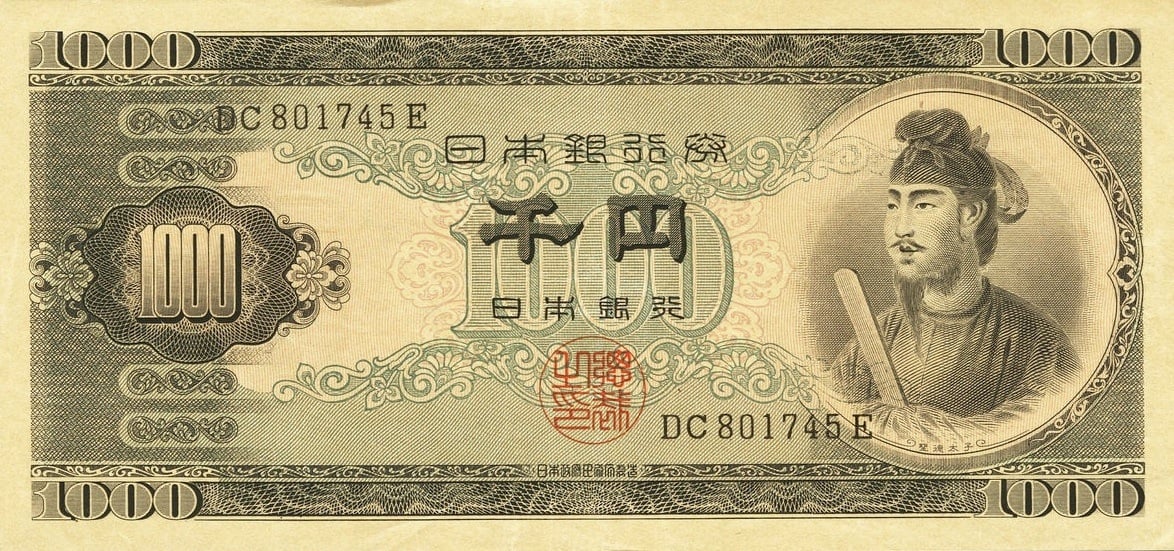
In 1984, another new series of notes were introduced, this time featuring the face of Natsume Soseki, one of Japan’s most famous authors, and a world-renowned author full stop. On the reverse side are cranes, which represent happiness and longevity. Natsume Soseki lived a life so fascinating that it deserves its own article—a life that has been immortalized not just on the 1,000 yen bill, but on monuments, in movies, anime, dramas and even video games.
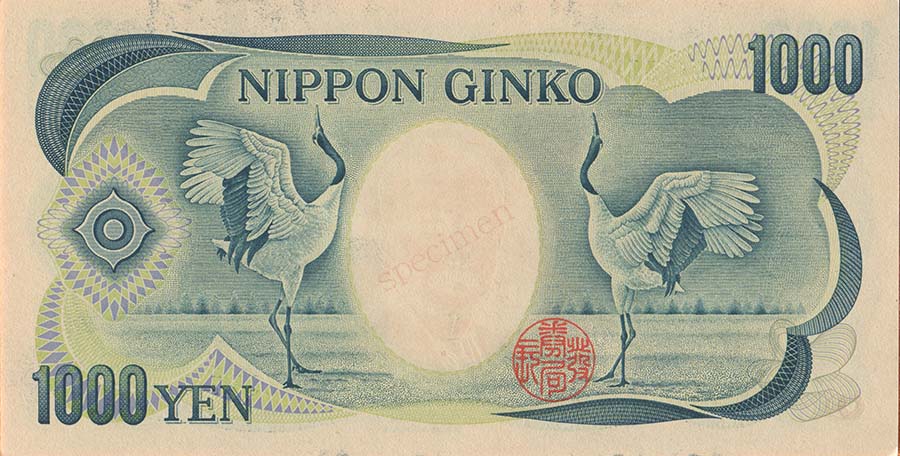
Hideyo Noguchi adorns the modern 1,000 yen bill, with the reverse a landscape of Mount Fuji. Hideyo Noguchi is known for his breakthroughs in bacteriology, specifically surrounding his research on syphilis. The future 1,000 yen, which will be introduced in 2024, will also feature a famous bacteriologist: Kitasato Shibasaburo, with Hokusai’s Great Wave Off Kanagawa on the reverse side.
¥5000 Note
The 5,000 yen bill was introduced in 1957, now donning the visage of Prince Shotoku of the aforementioned original 1,000 yen bill, with the back now showing the headquarters of the Bank of Japan. In 1984, a new 5,000 yen note was produced featuring Nitobe Inazo, a Christian author who penned the internationally famous philosophy book Bushido: The Soul of Japan. The reverse side shows Mount Fuji, similar to the modern 1,000 yen note.
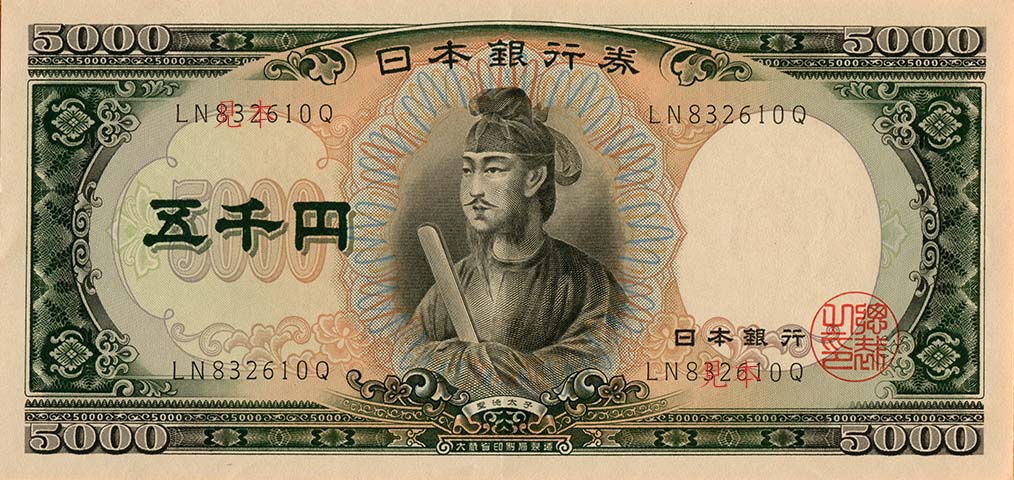
The modern 5,000 yen bill, originally printed in 2004, introduced the first female to adorn Japanese currency: Higuchi Ichiyo, another writer who specialized in short stories and poetry. Historically, she’s known as the first professional female author in Japan. The reverse side shows Kakitsubata-zu, a twelve-panel screen painting of irises inspired by the poetry collection Ise Monogatari. This painting is suspected to be an influence on Van Gogh’s Irises.
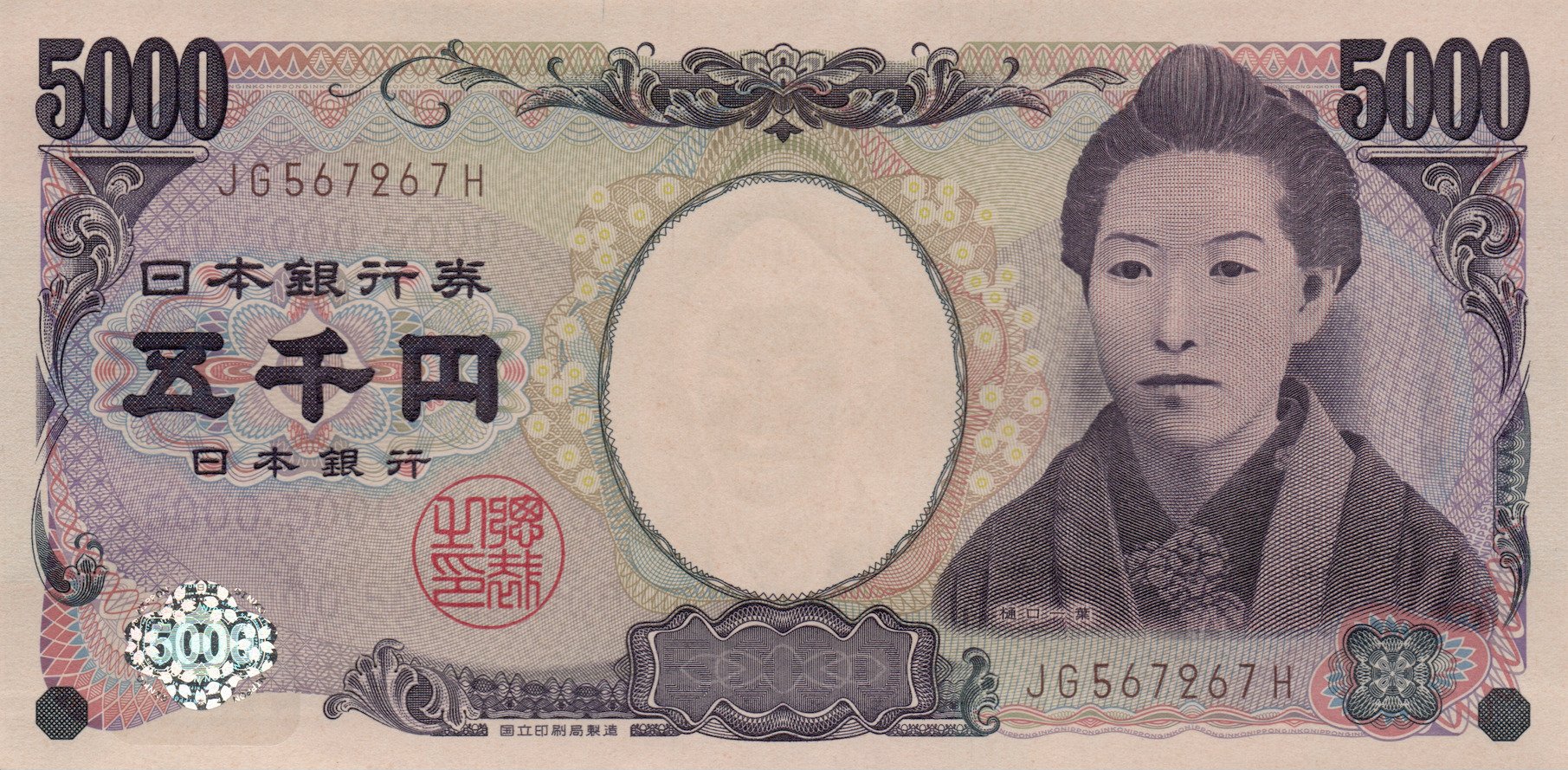
In 2024 a new 5,000 yen bill will be introduced, this time with Tsuda Umeko on the front and a painting of wisteria flowers on the back. During the Meiji period, Tsuda Umeko was a noted proponent of western culture’s influence on Japan, including Christianity and education for women.
¥10,000 Note
The first 10,000 yen note was introduced in 1957, and also featured Prince Shotoku, with the reverse side showing a depiction of the fenghuang, a mythical bird from Chinese folklore, as well as a soft impression of Byodo-in Temple in the background, which is also featured on the 10-yen coin. In fact, despite the many revisions and redesigns of Japanese currency, the through-line across so many of them is the Byodo-in Temple, a testament to the importance of this 1,000-year-old structure to Japanese symbolism.
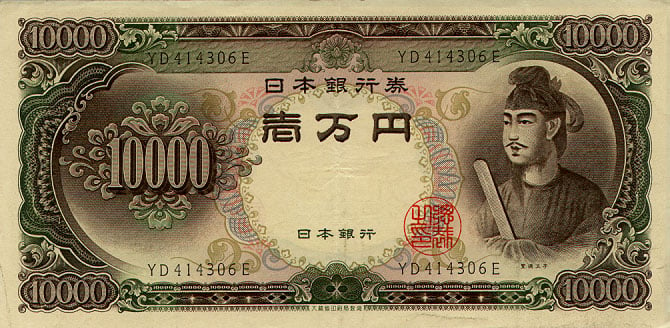
In 1984 a new 10,000 yen bill was introduced with Fukuzawa Yukichi on the front, a famous samurai who formed Keio University. He was well known for his diplomacy, once serving as the official translator for the Tokugawa Shogunate. His book Zotei Kaei Tsugo was a Japanese-English phrasebook that invented the ヴ katakana, to help Japanese speakers conceptualize the correct pronunciation of the letter V in English. The reverse side shows two pheasants. In 2004, when the bill was updated, Fukuzawa remained on the front of it, with the reverse design being changed to the aforementioned fenghuang (specifically a statue of one at Byodo-in Temple).
In 2024, Fukuzawa Yukichi will finally step down as the loyal face of the 10,000 yen note to make way for Shibusawa Eiichi, who is considered the “father of Japanese capitalism.” Among other accomplishments, he founded the Tokyo Stock Exchange. On the reverse side there will be a depiction of Tokyo Station, a building with an architectural style very much of Shibusawa’s time.
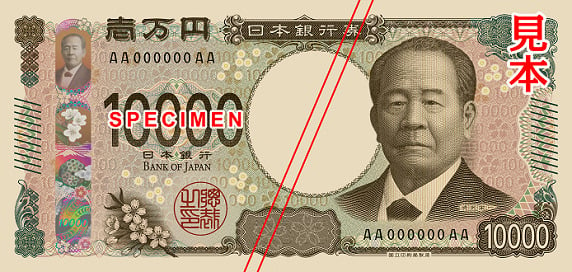
The Curious Case of the ¥2,000 Note
In the year 2000, a new denomination was quickly introduced and then forgotten about: The 2,000 yen note. It depicts Shureimon, a famous gate in Okinawa—a reference to the bill’s introduction alongside the 28th G8 summit, held in Okinawa. The reverse side depicts a scene from Genji Monogatari, alongside a portrait of the novel’s famous author, Murasaki Shikibu.
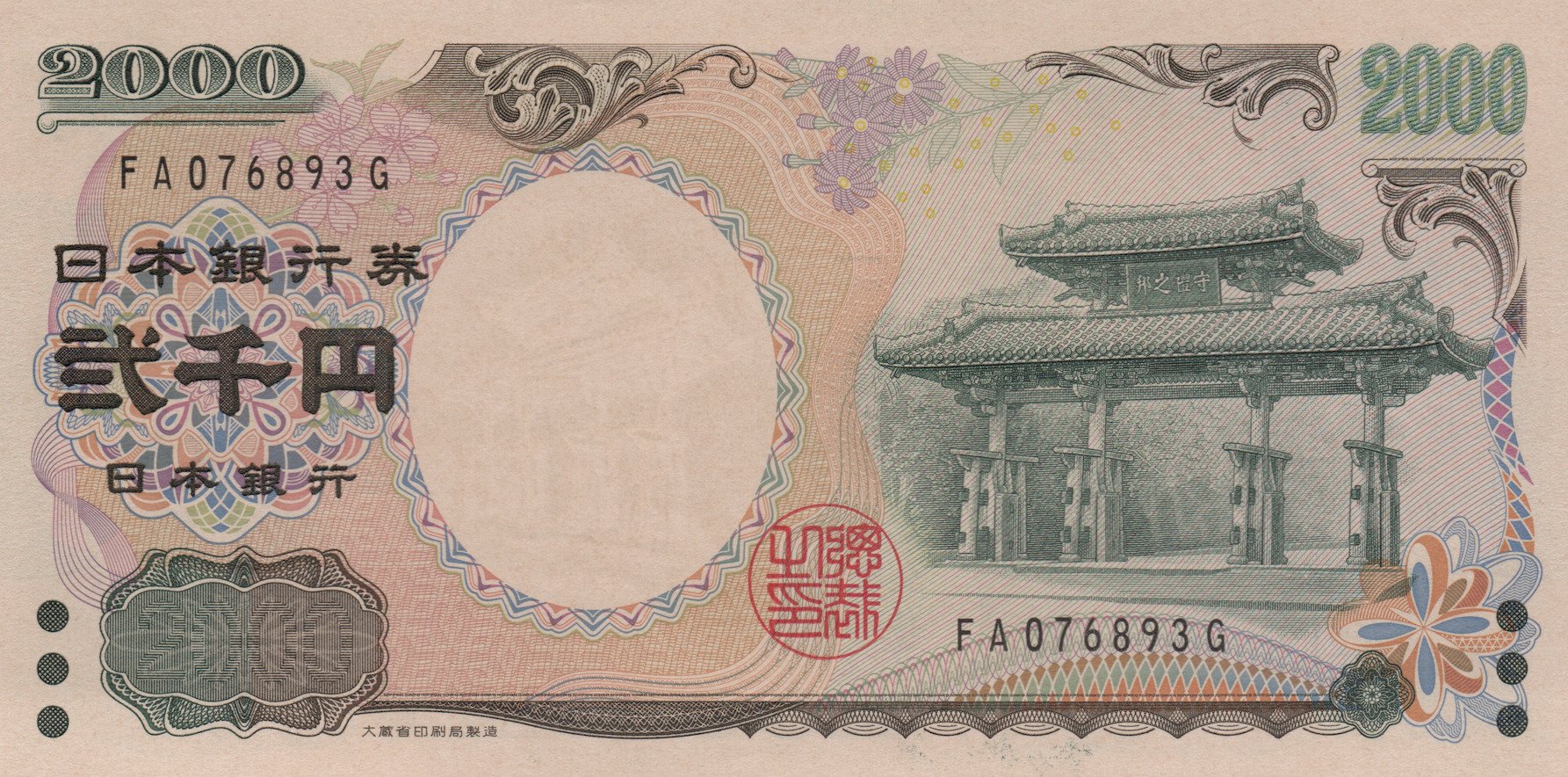
While widely regarded as an inconvenient novelty, there is some charm to the bizarre and rare nature of the 2,000 yen bill. I’ve never seen one, and only know one expat who has. While this rarity might make it a pain to use in some cases, it also foreshadows the increase in value that the bill may have in the future: Despite only being out of print since 2004, in certain situations they are already commanding a higher value on resale than through their face value, despite still being legal tender.
What I’m saying is: If you find one, get some baseball player’s signature on it and frame it! Maybe in 2050 it’ll be worth 2,050 yen.
What Can We Learn From Japanese Bills?
Well, quite a lot actually. The most difficult part of this article was truncating the immense amount of information down to something…well, article-sized. Some of these people have lived lives so packed with meaningful breakthroughs and international intrigue that one may be at a loss at where to begin. I encourage you to pick a Japanese currency at random and start researching into it, further than I’ve elaborated on in this article at least.
Even scant research on the faces and places of Japanese banknotes would serve as a decent crash-course in Japanese history. I consider myself knowledgeable on the subject, and even I was surprised by the sheer amount I didn’t know about the faces that I see every time I pay for my groceries. That is perhaps the greatest indicator of what makes a good currency design: By studying the bills of the Bank of Japan, you can achieve a baseline knowledge of Japan’s struggles, ideals, inspirational figures…in short, of their history.













